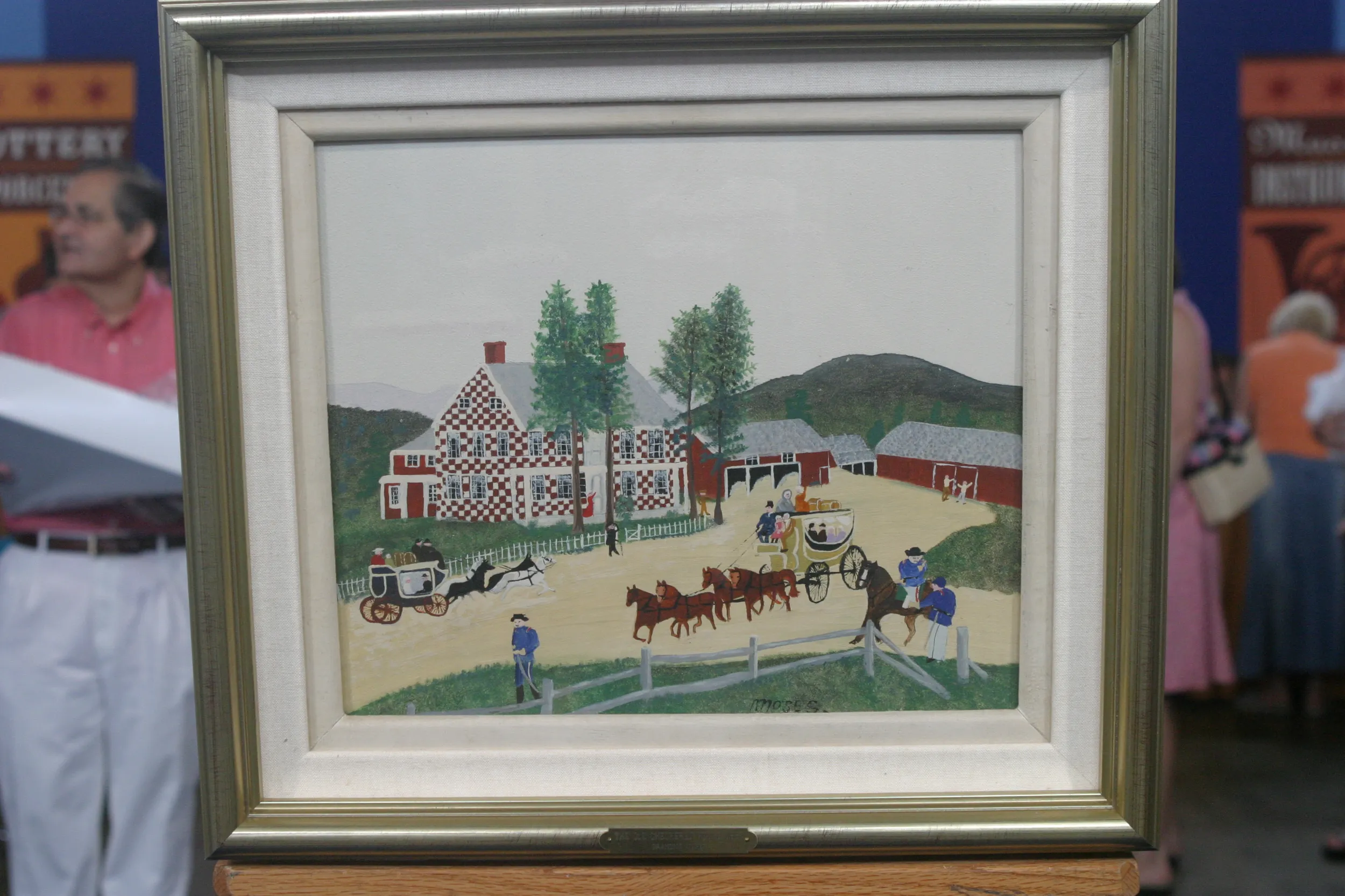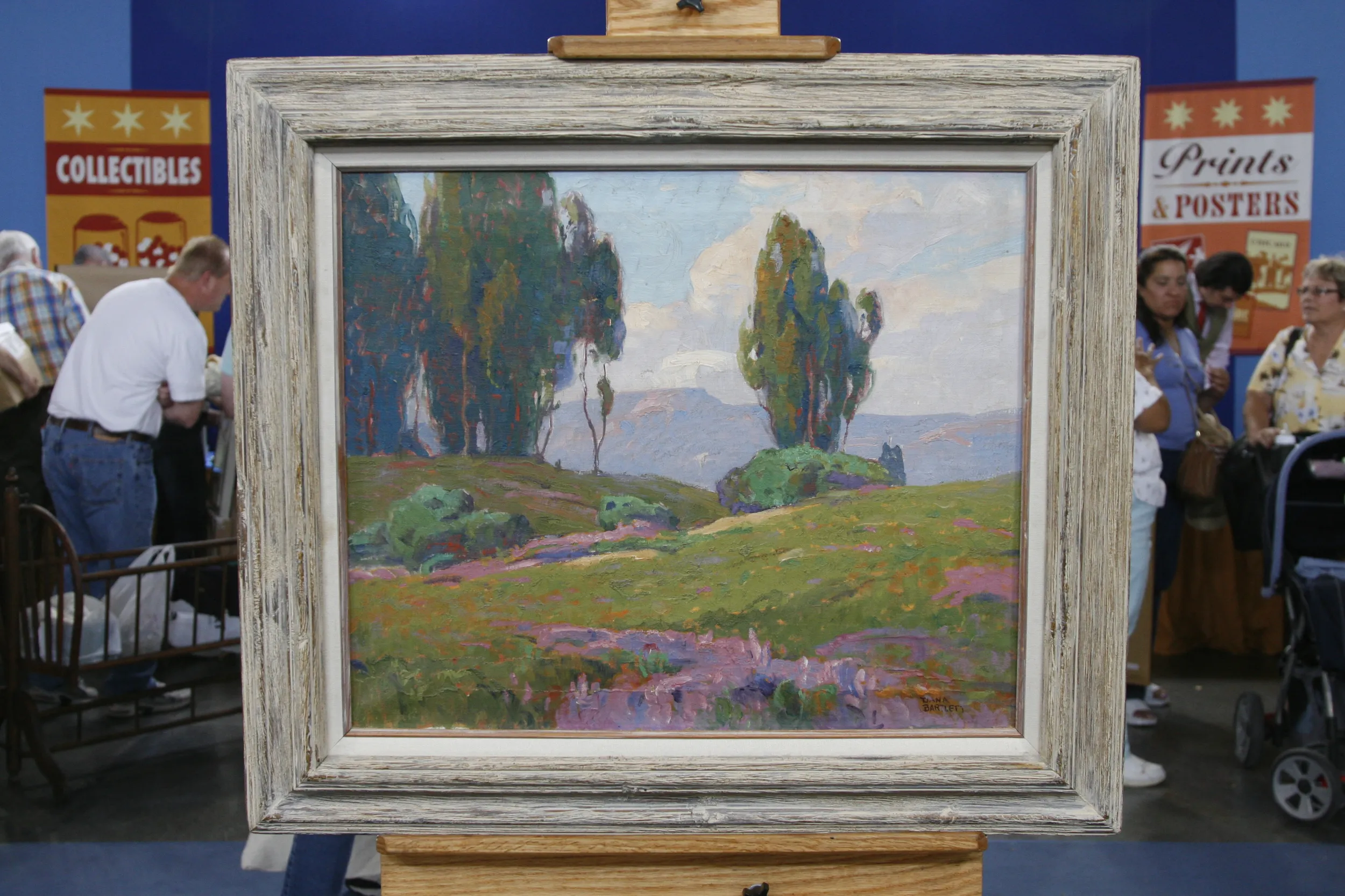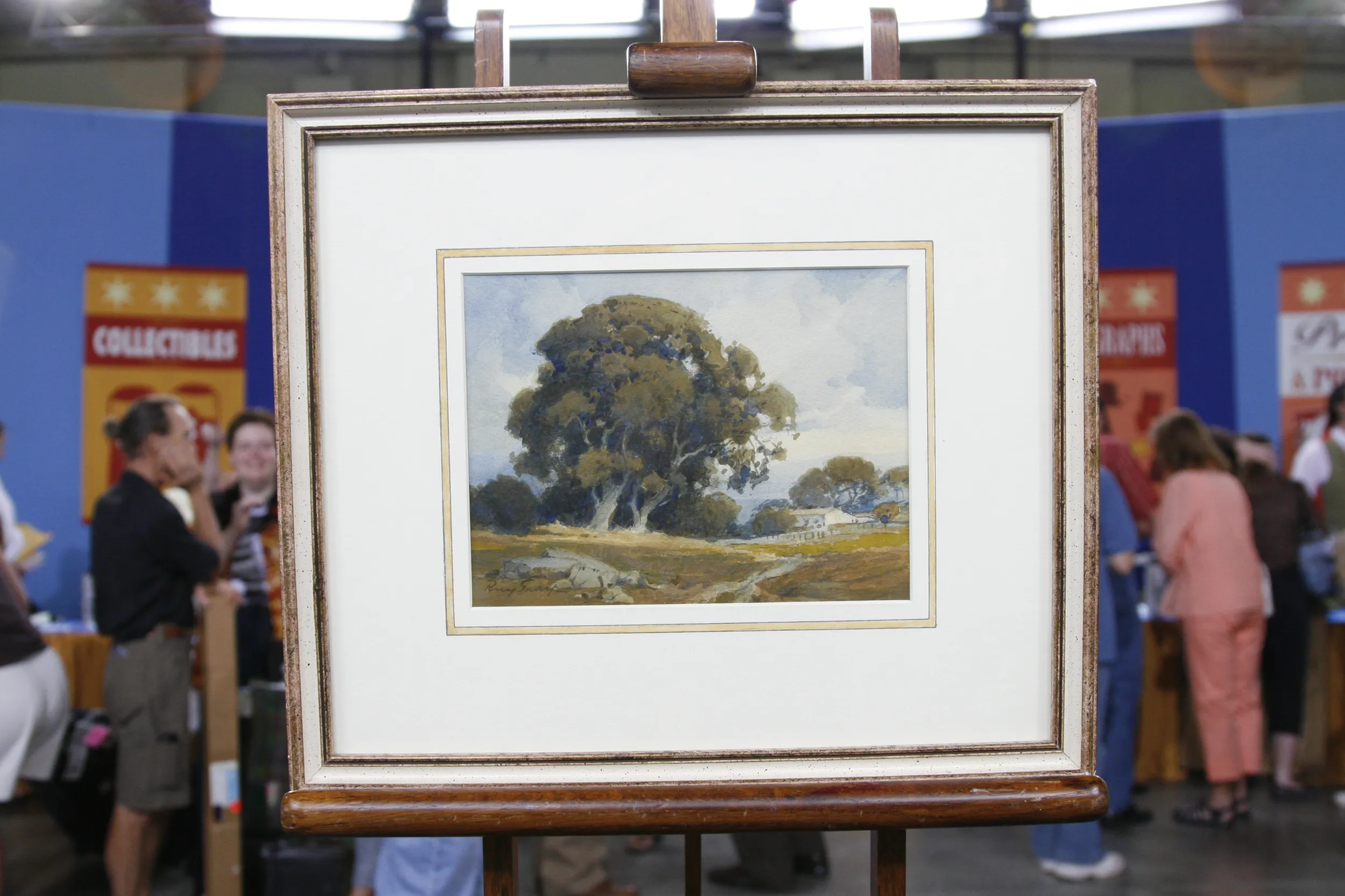GUEST: I brought a watercolor. The painter's name is Gordon Phillips. He's one of the Canadian Seven. It was a nice watercolor that I purchased from the Hallmark Canadian company while I was working there.
APPRAISER: And about when was that that you would have purchased it?
GUEST: 1961.
APPRAISER: And do you remember what you paid?
GUEST: I paid $300.
APPRAISER: Well, we do have a Canadian watercolor here. The artist's name is actually Walter Phillips.
GUEST: Oh, it is, okay.
APPRAISER: And it's signed in the lower right, "W.J. Phillips." His middle name was Joseph. He was not one of the Canadian Seven.
GUEST: He wasn't? They told me he was.
APPRAISER: He actually opposed the Canadian Seven.
GUEST: Oh, he did?
APPRAISER: He was an art critic as well as an artist, and he had a much more academic approach to depicting the Canadian landscape, and he felt that the Canadian Seven were far too aggressive and moody with the way they made their depictions, so he actually kind of opposed them and didn't want their style to become known as the Canadian way of painting. He was an English artist originally. He was born in England in 1884 and he emigrated with his wife to Canada around 1913. I'm going to date this watercolor, which is on paper, to the late 1940s. Before then, he was doing a lot of different things: a lot of printmaking-- he's one of Canada's best known printmakers. But after about 1946, he started exclusively doing these Rocky Mountain depictions in watercolor. These are the Three Sisters, mountains in Alberta.
GUEST: Okay.
APPRAISER: This was one of his favorite things to paint. And this scene is especially near and dear to his heart because he not only painted it a lot but stipulated that when he passed away, which happened in 1963, that that's where he wanted his ashes to be scattered. After you purchased it, was there anything that happened in the life of the painting or did you just hang it on the wall?
GUEST: No, about four years after I had purchased it, the Canadian government contacted me and asked me if I would like to send it back. I really told them I really liked the painting and didn't think I would like to. And they bothered me a couple more times and I still said no, and I've never heard any more out of them.
APPRAISER: So they wanted it back. Did they say why?
GUEST: They just said that they wanted it back as one of their national artists.
APPRAISER: So he was that important to Canadian art history.
GUEST: I took it that way.
APPRAISER: Do you have any idea of the value?
GUEST: I really don't. I know it's a very nice painting. Being a watercolor artist myself, I know what it takes to be able to paint this way, but no, I really don't know.
APPRAISER: Yeah, it's certainly not an easy feat. So you paid $300 in 1961. If we were estimating this for auction today, we would place an estimate of $12,000 to $18,000.
GUEST: Oh, wow, how wonderful. Isn't that nice? Nice appreciation.
APPRAISER: It really is, and it's just a beautiful example of his work. Well, thank you very much.










